Mang Lang Church – Unique Gothic Architecture Over 130 Years Old in Phu Yen
Phu Yen not only has beautiful, poetic beaches but also stunning, ancient cultural and artistic structures with unique architecture. One such structure is Mang Lang Church, a Catholic church with distinctive and impressive ancient European architecture.
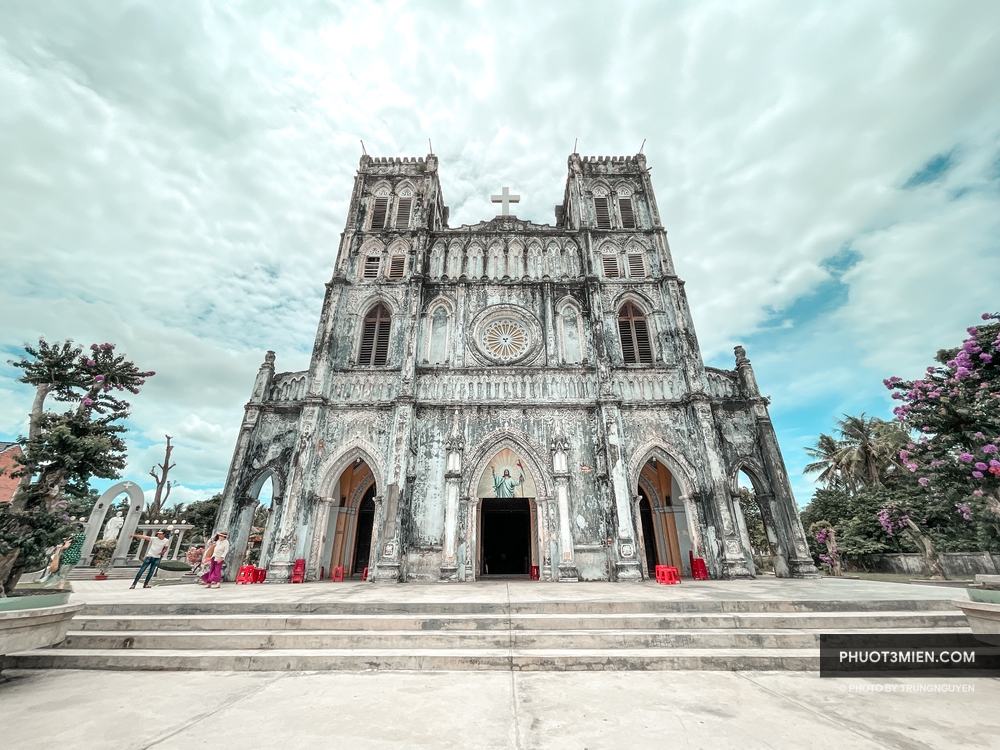
From Tuy Hoa City in Phu Yen Province, travel north on National Highway 1A for about 30 kilometers, and you will reach Mang Lang Church. This place is closely associated with the rich history of missionary work in this region.
Mang Lang Church is the main church of Mằng Lăng Parish in the Phu Yen deanery, Quy Nhon diocese. To the north is Song Cau Parish, to the south is Tuy Hoa Parish, to the west is Dong Tre Parish, and to the east is the sea, with the church located 35 kilometers north of Tuy Hoa City. The church is situated by the Ky Lo River, also known as the Cai River, about 20 kilometers east of Chi Thanh town.
Exploring the History of the Church
According to historical records from the Nguyen dynasty, in the year of Mau Dan (1578), King Chua Tien appointed Luu Van Chanh as the border guard officer. However, it was not until the year of Ky Ty (1629) that Lord Sai Nguyen Phuc Nguyen established the border post and appointed his son-in-law, Nguyen Phuc Vinh, as the border guard officer. The officer’s wife, Princess Ngoc Lien, the eldest daughter of Lord Sai, converted to Christianity and was baptized in 1636 with the Christian name Maria Madalena. She then established a chapel in the border post, marking the formation of the first Christian community in the area.
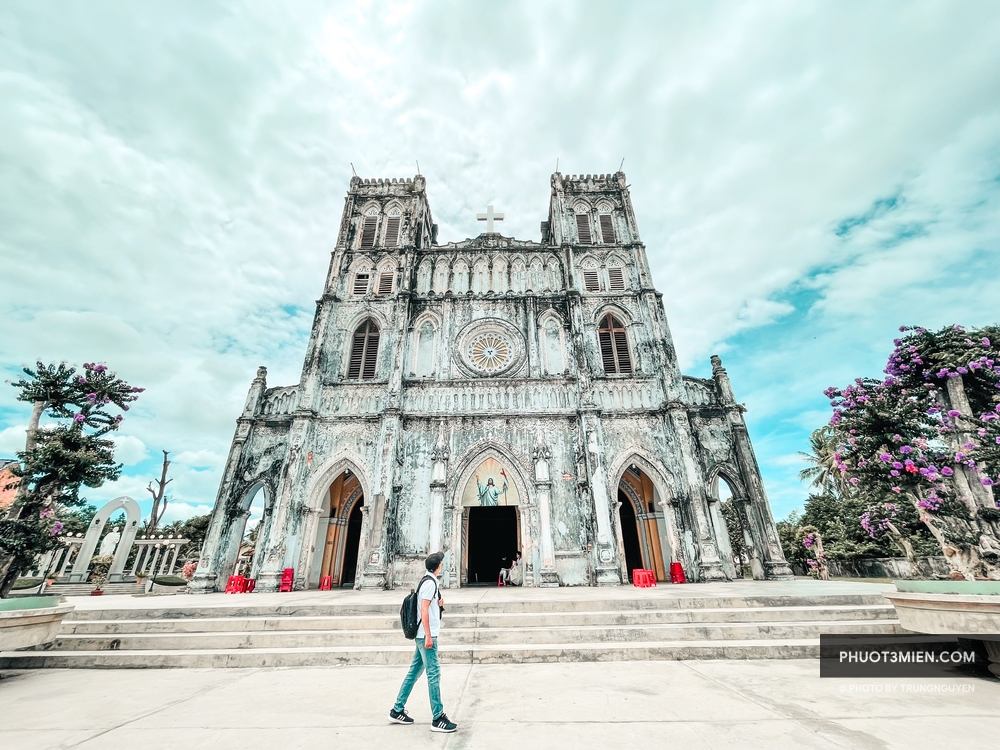
Mang Lang Church was built in 1892 with funding from the Paris Foreign Missions Society, under the supervision of French priest Joseph de La Cassagne (also known as Co Xuan). He was the first priest and was laid to rest here for eternity; his tomb lies near the eastern entrance inside the church, at ground level with a plaque above.
According to elderly residents in An Thach, over 100 years ago, the area was sparsely populated with dense forests. Among them was a type of tree, plentiful and broad-leaved, oval-shaped with pink-purple flowers, known as the bằng lăng. While traces of these forests are no longer visible, the church was named after this cherished tree during that period.
Distinctive Gothic Architecture
Mang Lang Church is situated within a 5000m² compound, built in Gothic architecture adorned with intricate decorative motifs reminiscent of churches in France or Rome, exuding artistic charm. Flanking the church are two bell towers, and at the center stands the crucifix. Originally painted white, over time the exterior has weathered to a somber black, blending harmoniously with the surrounding fields and garden scenery, resembling a serene watercolor painting.
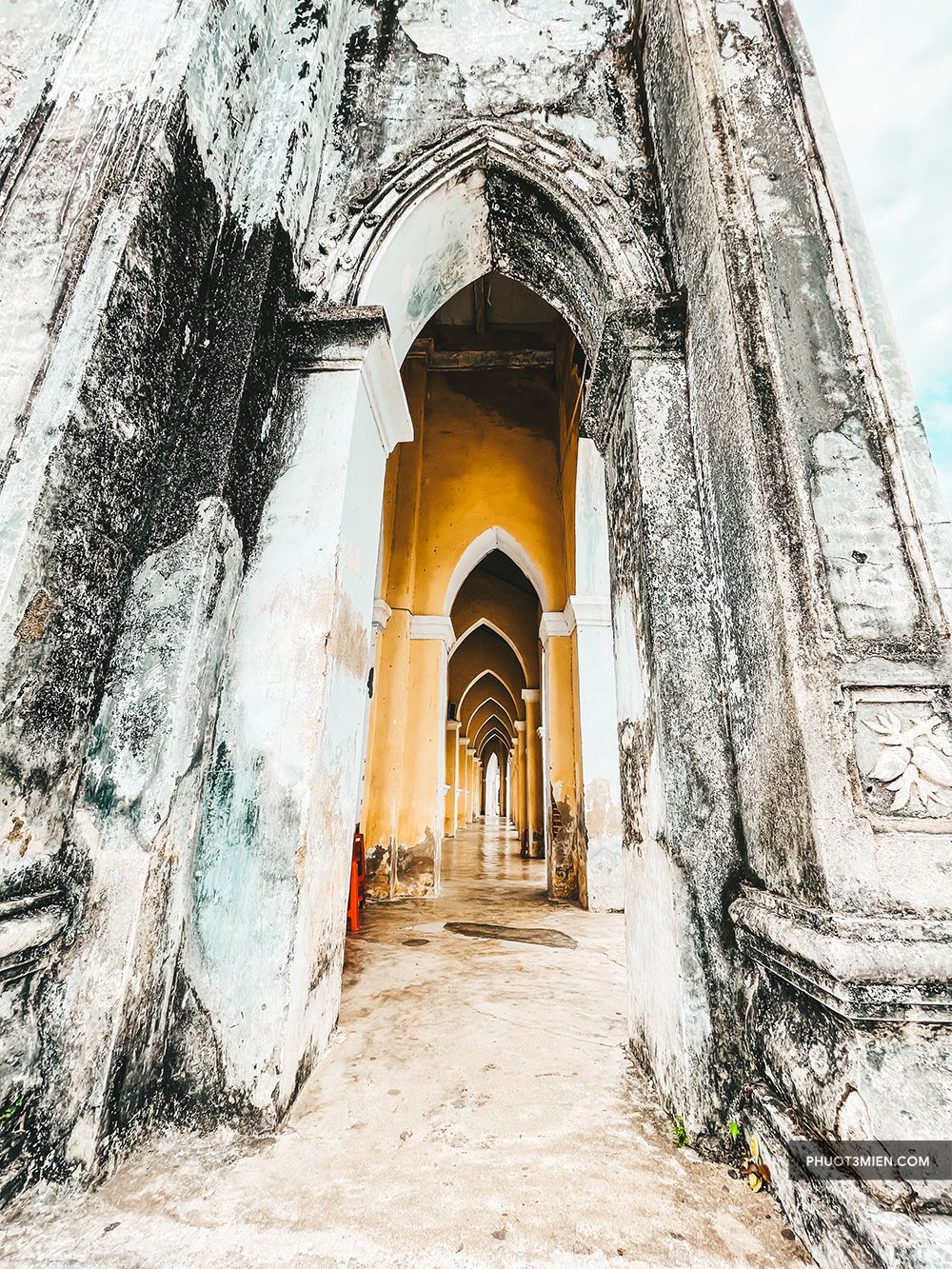
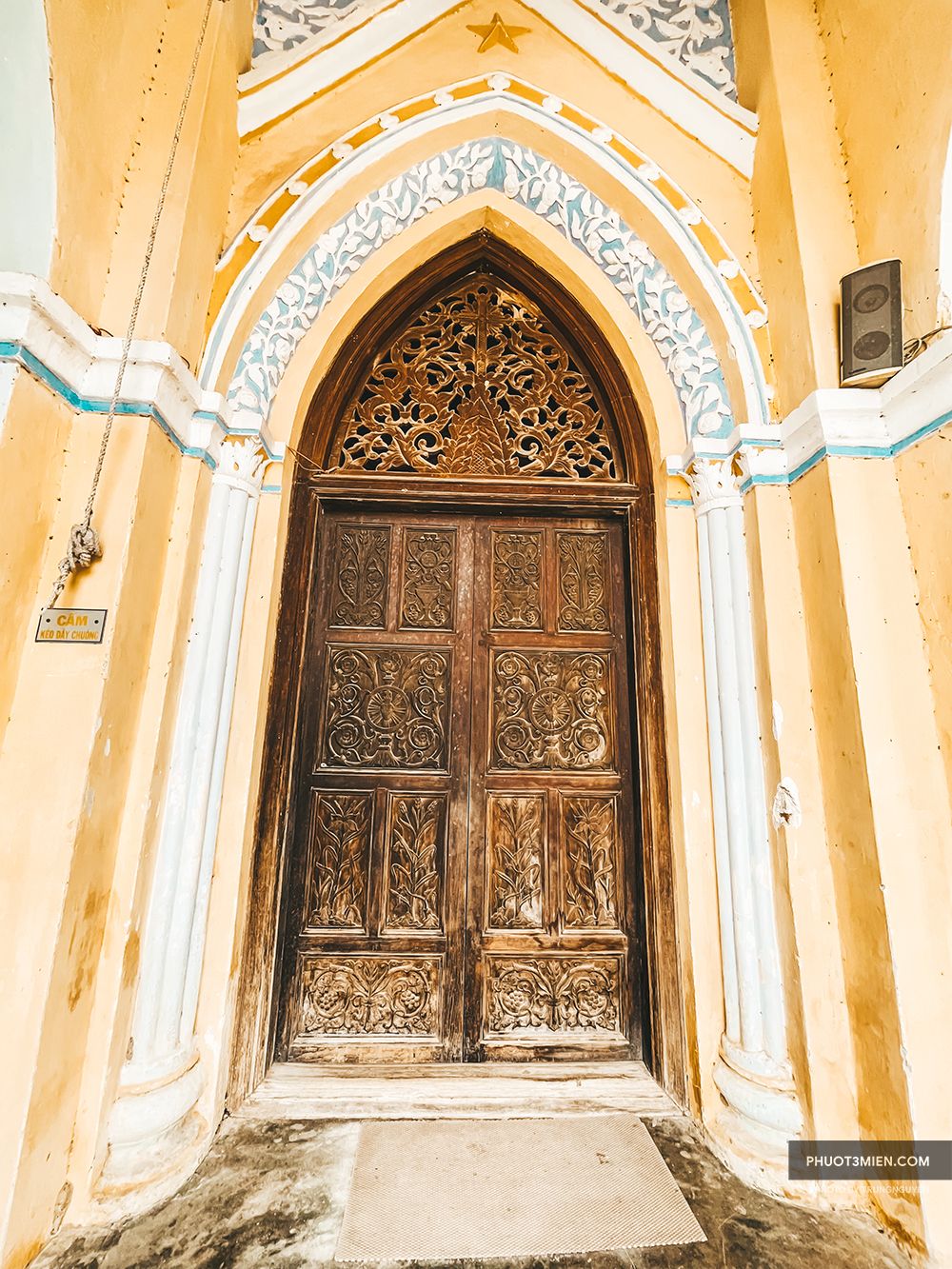
Domestic architectural experts highly appreciate the uniqueness of Mang Lang Church for its harmonious blend of European Catholic architecture with distinctly Vietnamese cultural elements in its decorative details. Many of these decorative elements have been weathered over time due to harsh weather conditions, yet some intricately carved details remain almost intact to this day.
The design of the church bears a resemblance to a smaller version of Notre-Dame Cathedral in Paris and shares similarities with Hanoi’s St. Joseph’s Cathedral, though using more rudimentary materials.
The facade of the church is adorned with vaulted entrances resembling bamboo shoots. Inside, the ceiling is lined with wooden panels, departing from the typical vaulted ceilings of Gothic architecture.
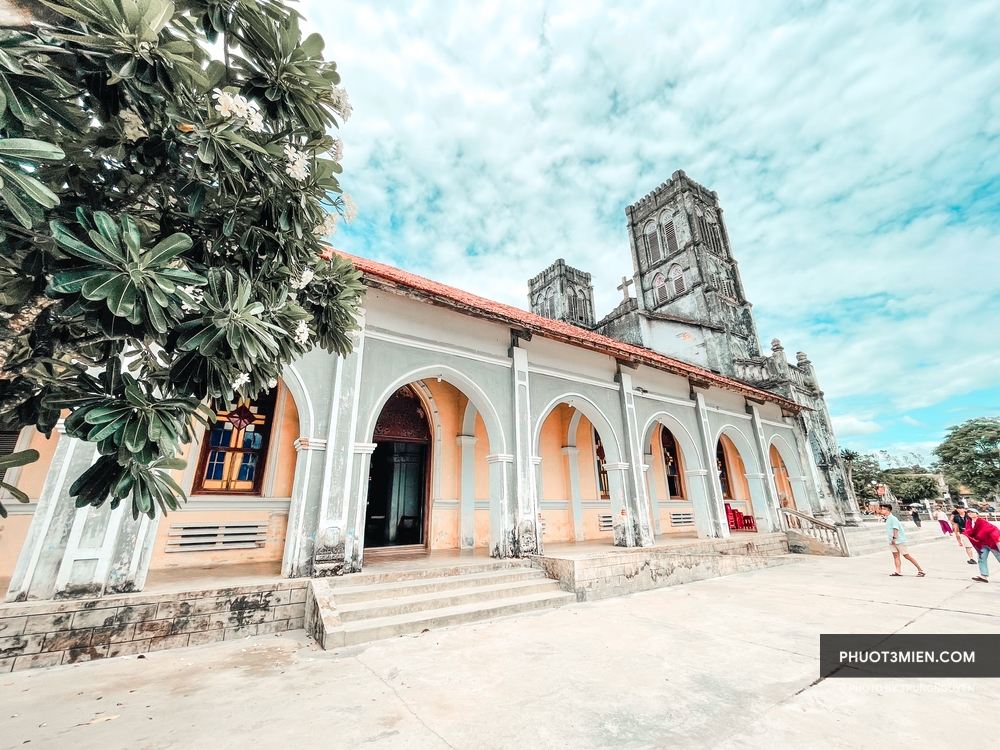
KKday is a travel APP platform offering over 20,000+ online products such as: tickets for amusement parks, outdoor services, sightseeing tours, culinary experiences, transportation, accommodation, courses, and local culture... Currently, there is a summer promotion with discounts up to 50% and coupons up to 250K VND off.

Attractive discount codes such as: 100K VND off for new accounts, 150K VND off summer promotion, 250K VND off, KKday birthday celebration...
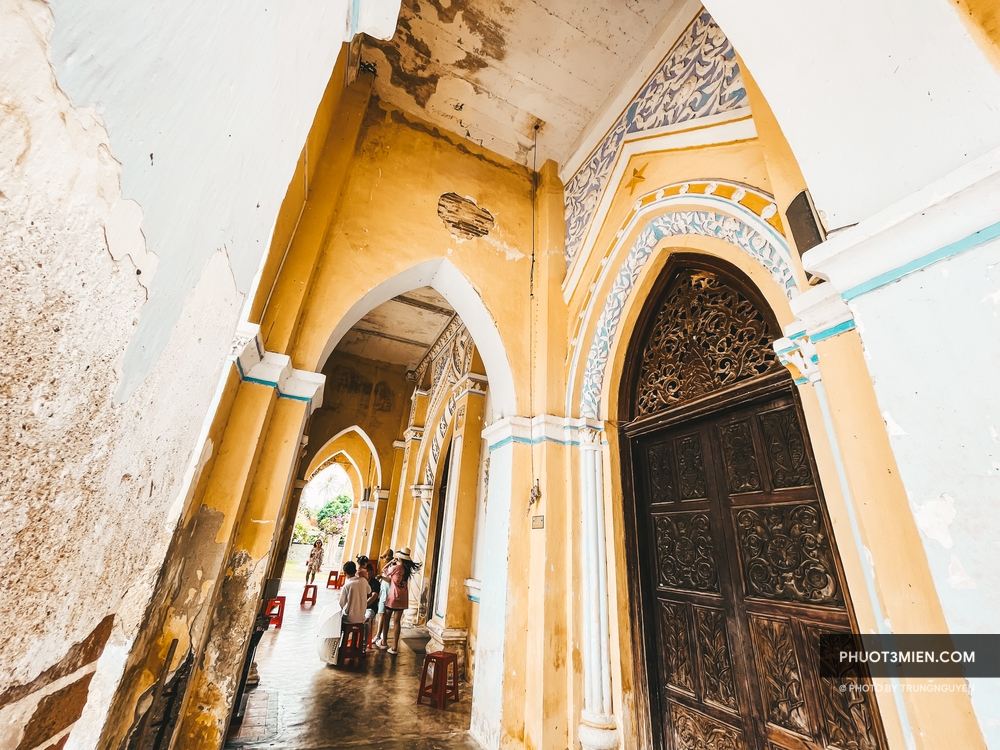
At Mang Lang Church, the Gothic influence is evident in the open aisles flanking the main nave, and in the pointed arch windows encircling the upper walls of the church. Beyond its European architectural origins, Mằng Lăng Church retains distinct Vietnamese characteristics through its intricate and finely crafted decorative motifs, exuding a rustic charm.
Inside the ancient cathedral
Upon entering the church, one finds two rows of columns connected by continuous vaults, with ornate carvings adorning the columns and ceiling. The floor of the cathedral is relatively high compared to the courtyard level, facing southward where the wind gently flows through.
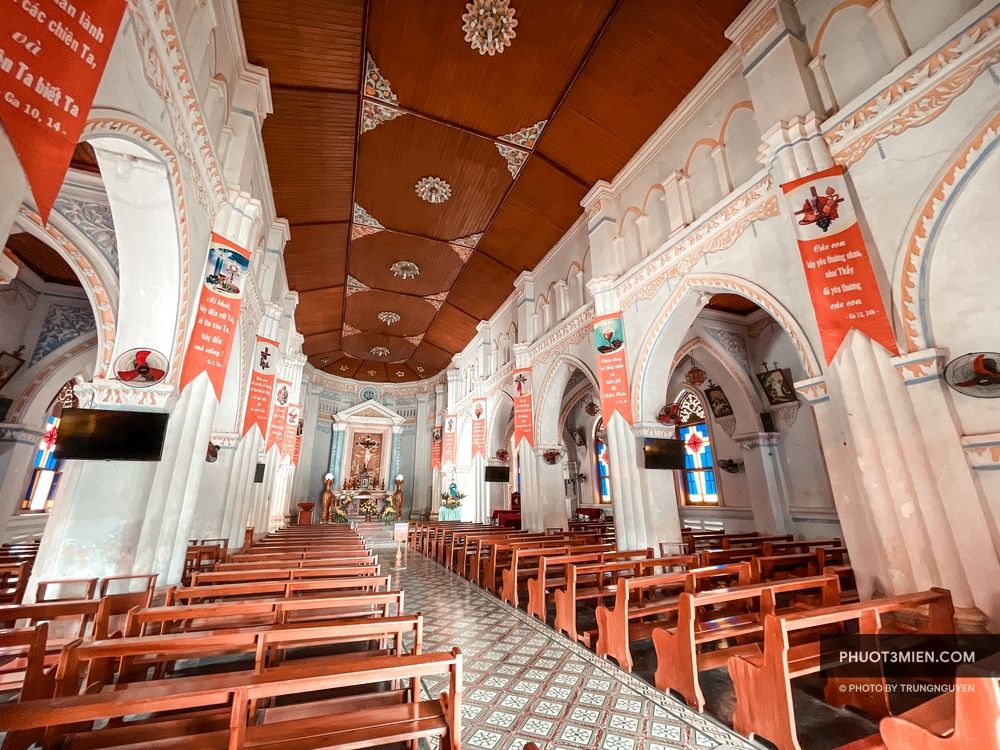
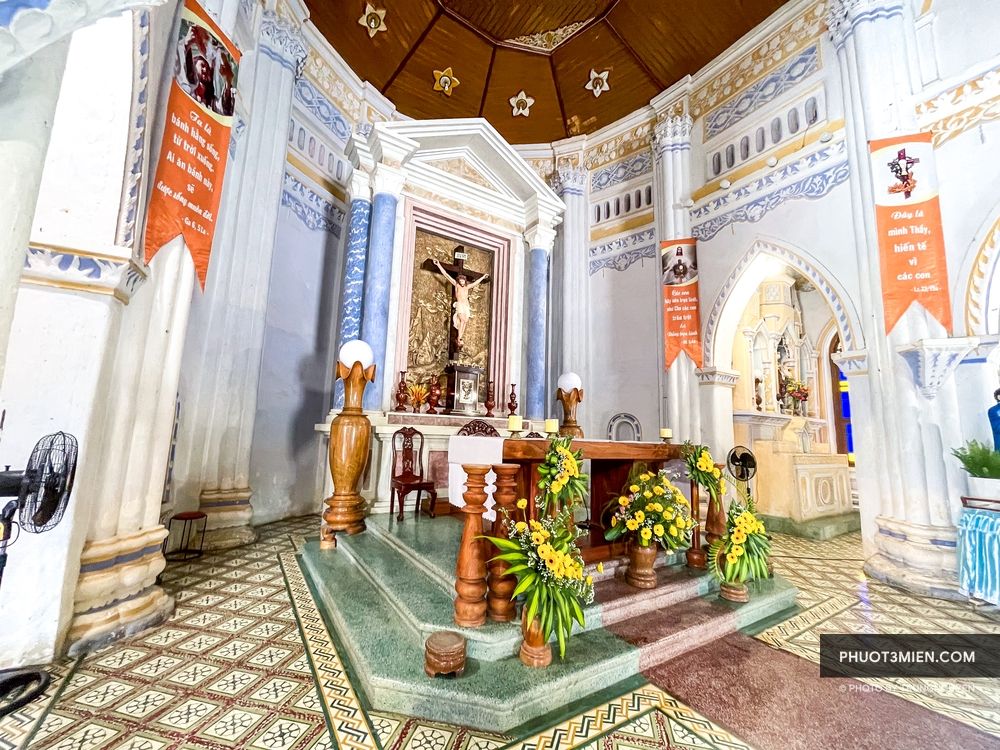
The windows of Mang Lang Church are fitted with brilliantly colored stained glass that radiates vibrant natural light. It can be said that this structure excels in architectural elements of sound, light, and ventilation.
The traditional room of Mang Lang Church, where the first Vietnamese-language books are preserved
To the front side of the church, there is an artificial hill, within which lies a meticulously constructed small cellar resembling a cave. This cellar is considered the traditional room of Mang Lang Church. Inside, numerous intricately carved sculptures depict stories of Saint Andrew of Phu Yen.
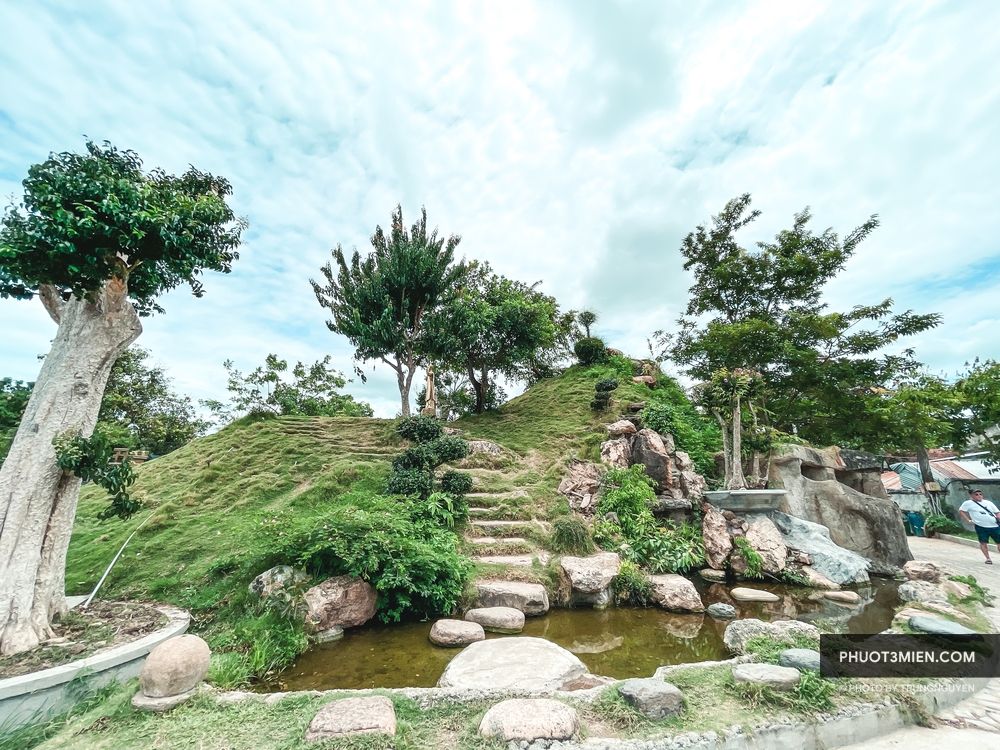
Currently, this place holds the first book printed in Vietnamese. It is the catechism “Phép giảng tám ngày” (Eight-Day Sermons) by Father Đắc Lộ (Alexandre de Rhodes), who played a significant role in introducing the Vietnamese alphabet using Latin script.
The book is kept with great reverence in a glass case, with the printing year marked as 1651 in Rome, Italy. It is presented in bilingual format, with Latin on the left and Vietnamese on the right. However, the Diocese of Quy Nhon has not officially verified these details, as it could possibly be a replica.
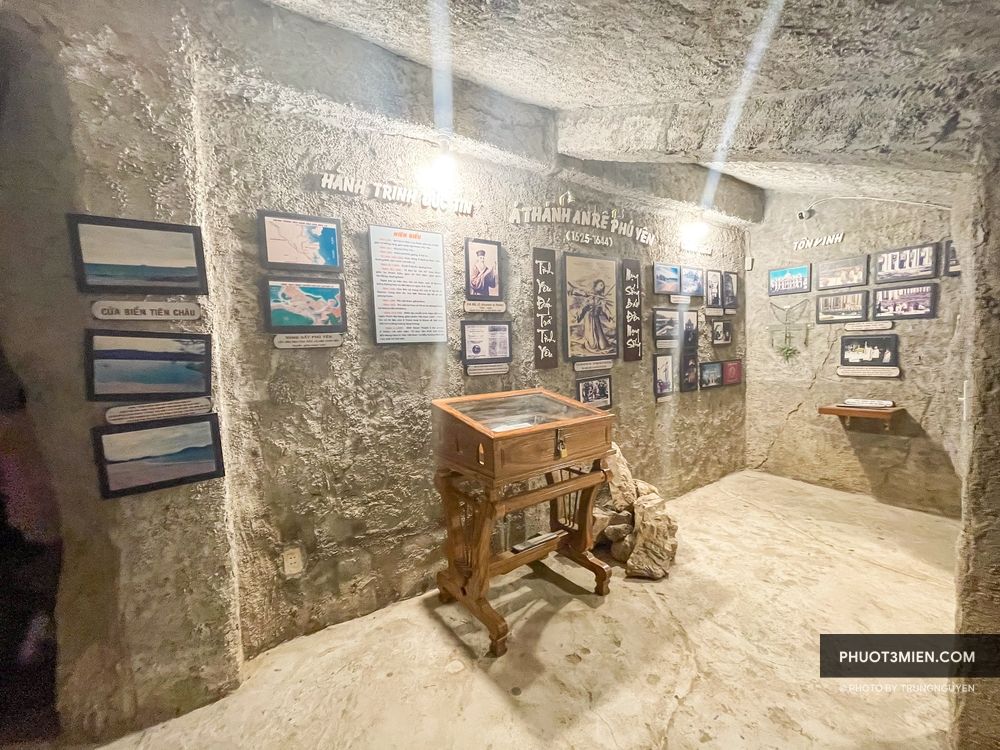
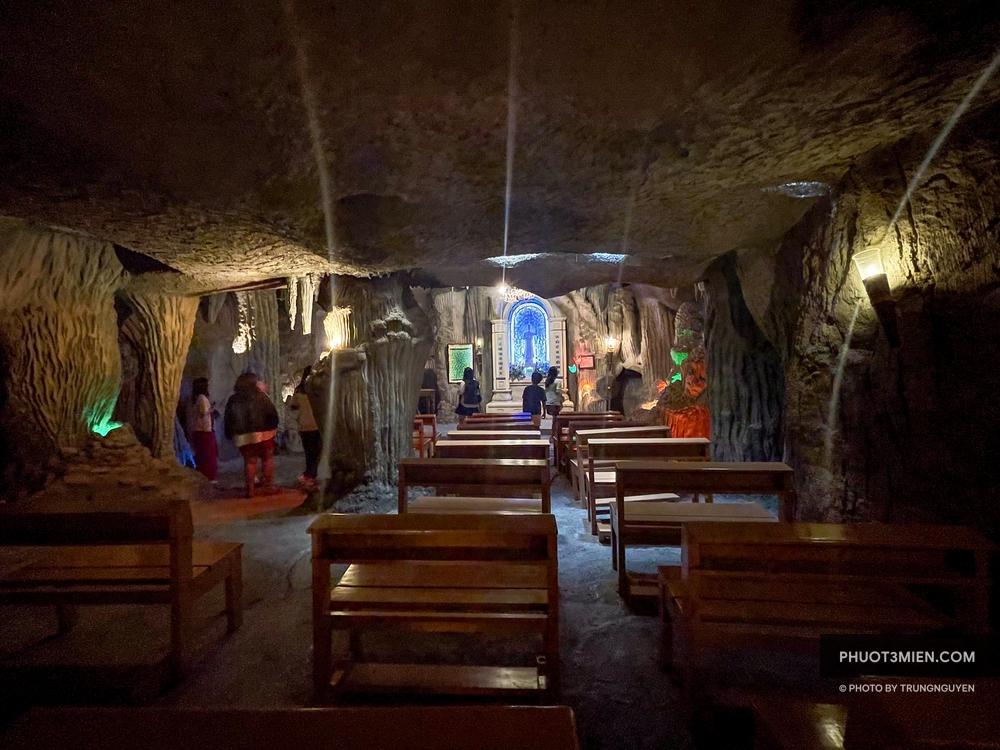
Historical Pillars Linked to Mang Lang Church
With a history spanning over 130 years, every wall, doorway, and prayer bench at Mang Lang Church bears the mark of time, showcasing unique architectural features typical of the 19th century.
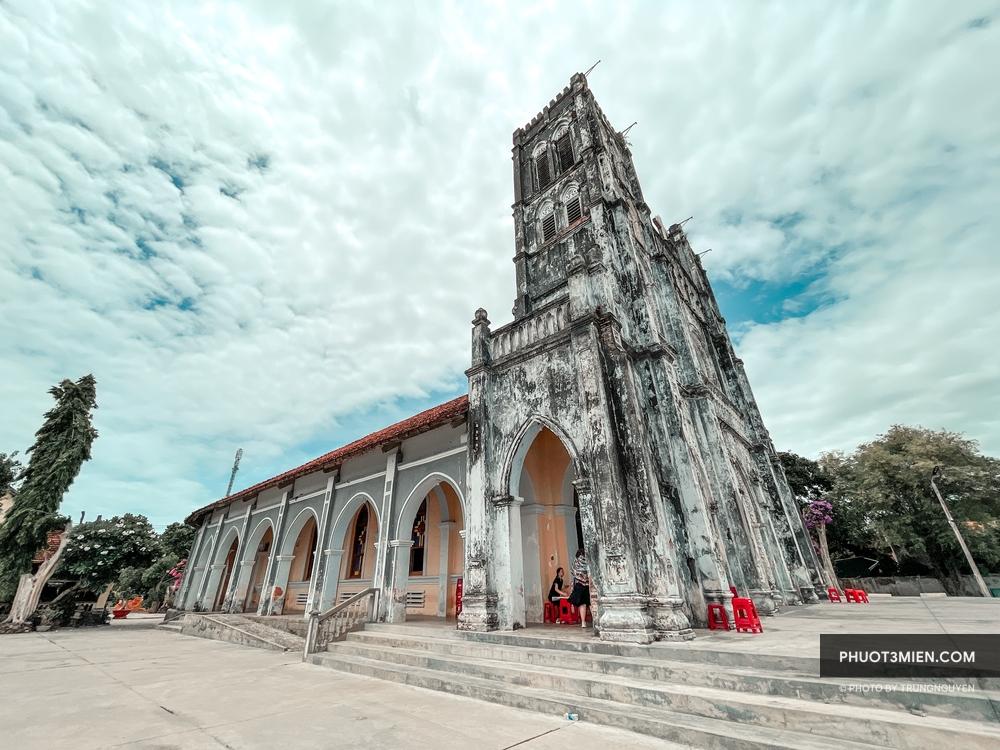
Since its construction, Mang Lang Church has undergone several repaintings, with different colors at times, only to be restored to its original color later, which best suits the church’s architecture. Although small, the church boasts a spacious and cool courtyard.
In the past, during the storm of the Year of the Rat (1924), part of the church roof collapsed.
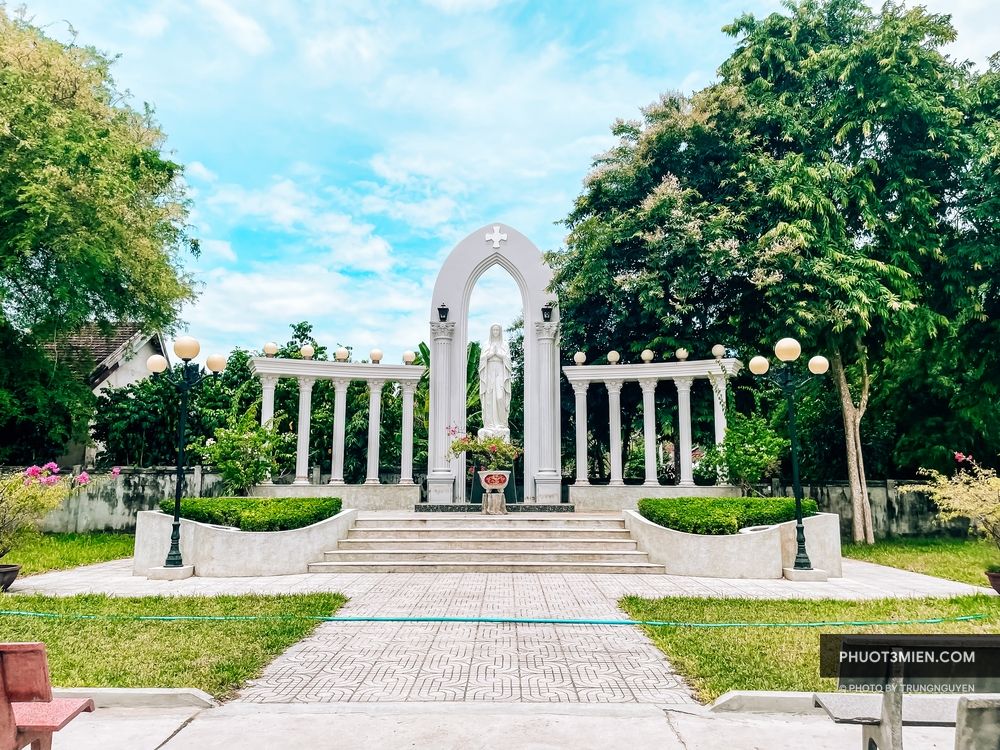
In 1928, Father Lê Kim Dung, the parish priest, undertook renovation work.
In 1994, when the church was over a hundred years old and had suffered significant damage, each toll of the bells caused the two bell towers to sway. Father Bùi Huy Bích, the parish priest at the time, undertook major renovations:
- The bell towers were reinforced with additional iron supports.
- Faded decorative motifs were meticulously restored to their original design.
- Damaged doors were replaced following the original style, preserving every part and detail unchanged.
In 1997, Father Bùi Huy Bích passed away, and he was buried in front of the Saint Joseph’s altar within the church grounds.
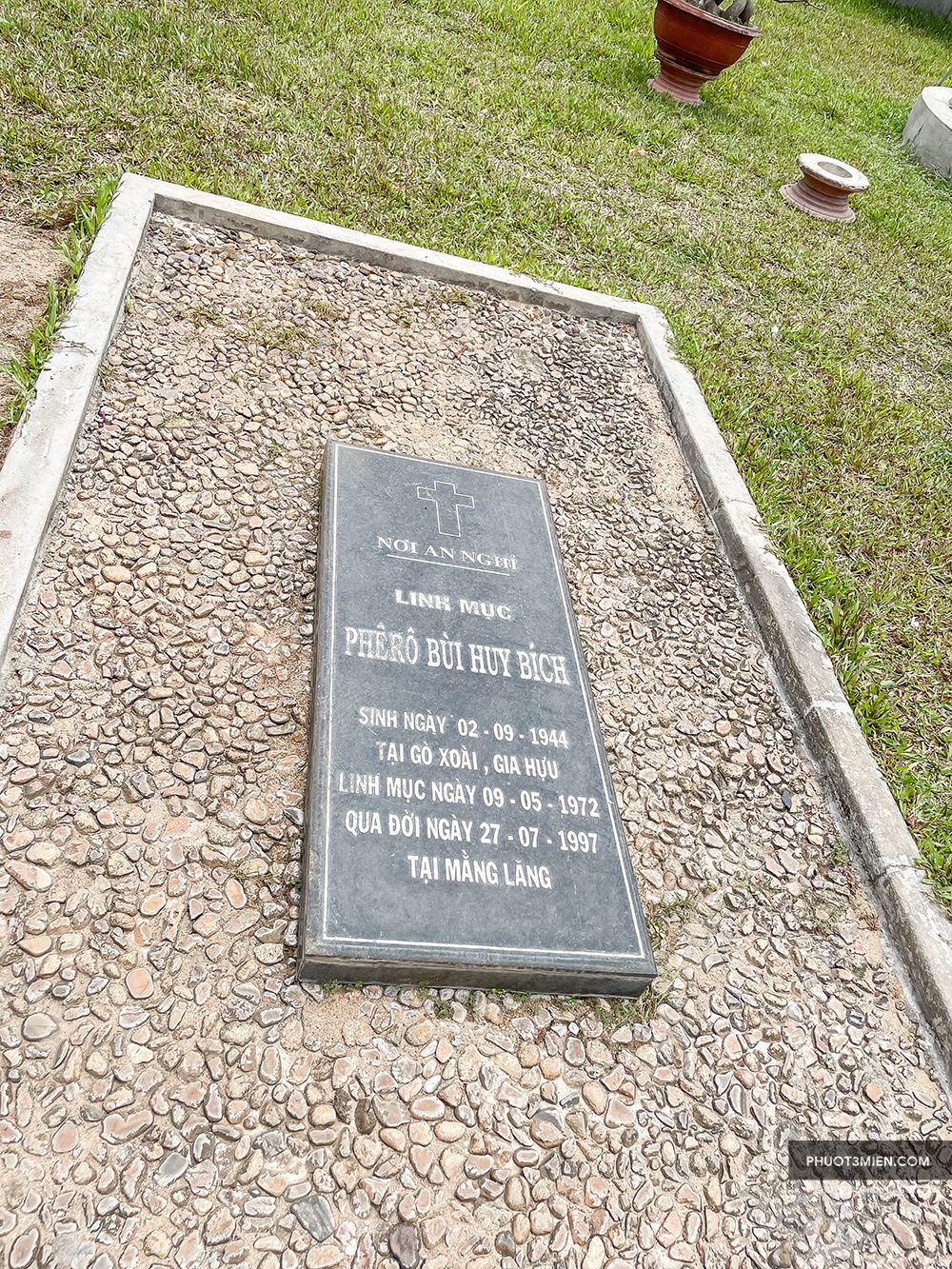
From its founding until 1928, Mang Lang Church was led by four French priests.
Since 1928, the parish priests have all been Vietnamese.
Blessed Andrew Phú Yên, a Canonized Saint
Blessed Andrew Phú Yên (born in 1625 – died in 1644) was born in the Mằng Lăng parish. His real name is unknown, but after being baptized in 1641, he was named Andrew Phú Yên.
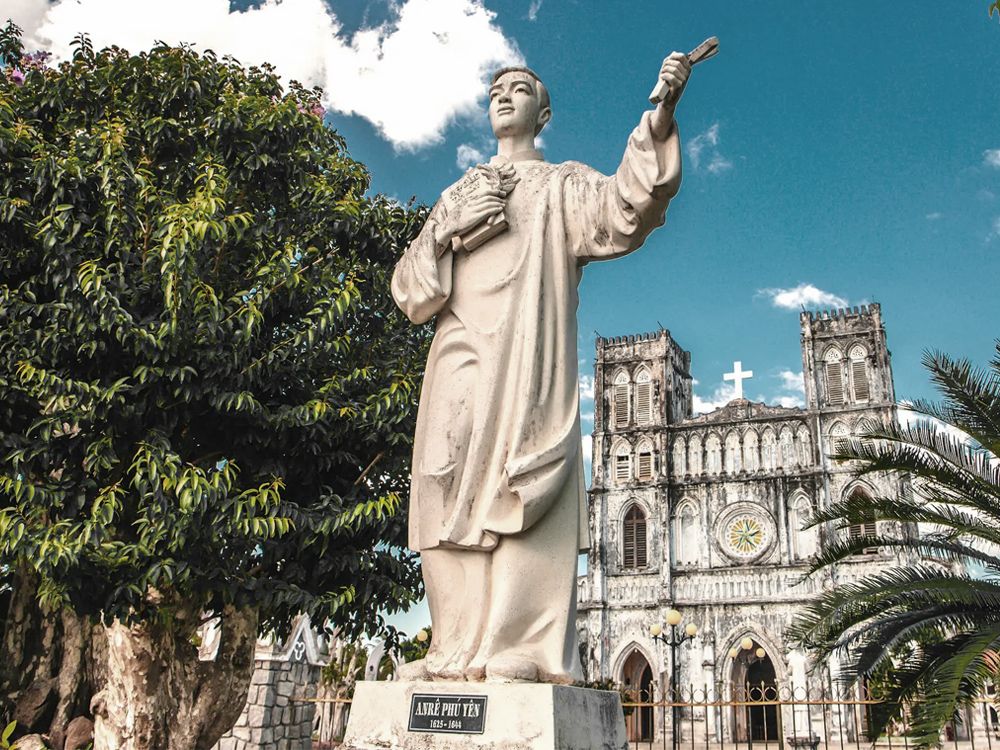
In 1642, at the age of 17, he accompanied Father Alexandre de Rhodes to Quảng Nam to study under the tutelage of the missionaries. Despite his youth, he became their most outstanding pupil. Living a life devoted to faith, Andrew Phú Yên was martyred on July 26, 1644, in Quảng Nam at the age of 19. He was the first Vietnamese martyr for the faith and is among the 117 martyrs canonized worldwide.
On March 5, 2000, Blessed Andrew Phú Yên was canonized by Pope John Paul II, becoming the first Vietnamese martyr saint of the Catholic Church.
Over the course of 400 years, from a small beacon of faith, it gradually spread throughout the region. This land fulfilled its historical mission of receiving and sowing the seeds of the gospel. Prosperity followed by decline serves as a reminder that nothing in this world is permanent and enduring…
In the consciousness of every parishioner at Mằng Lăng, there is still nostalgia for the bygone era of prosperity. The brightest glory in the sky of the parish remains Blessed Andrew Phú Yên, who brought honor to the parish worldwide. Mentioned by Pope John Paul II as a vivid example of faith for global youth during World Youth Day in Toronto in 2002.
Therefore, while striving to live up to the spiritual heritage left by their ancestors, the parishioners of Mằng Lăng wish to restore what has been lost, what is associated with the landmarks that now only echo their names. These are the legacies painstakingly built by their ancestors.
Today, this is not only a cultural hub for local residents but also attracts many tourists visiting Phú Yên.
Useful Information:
Parish Priest: Father Trương Minh Thái
Mass Schedule:
- Weekdays (Monday to Friday): 6:30 PM
- Saturday and Sunday: 5:30 AM (morning) and 6:30 PM (evening)
- Address: 86MG+M8, An Thạch Commune, Tuy An District, Phú Yên Province
See more Articles:
Islands of Vietnam – The Best Diving Destinations
What to See and Do in Nha Trang